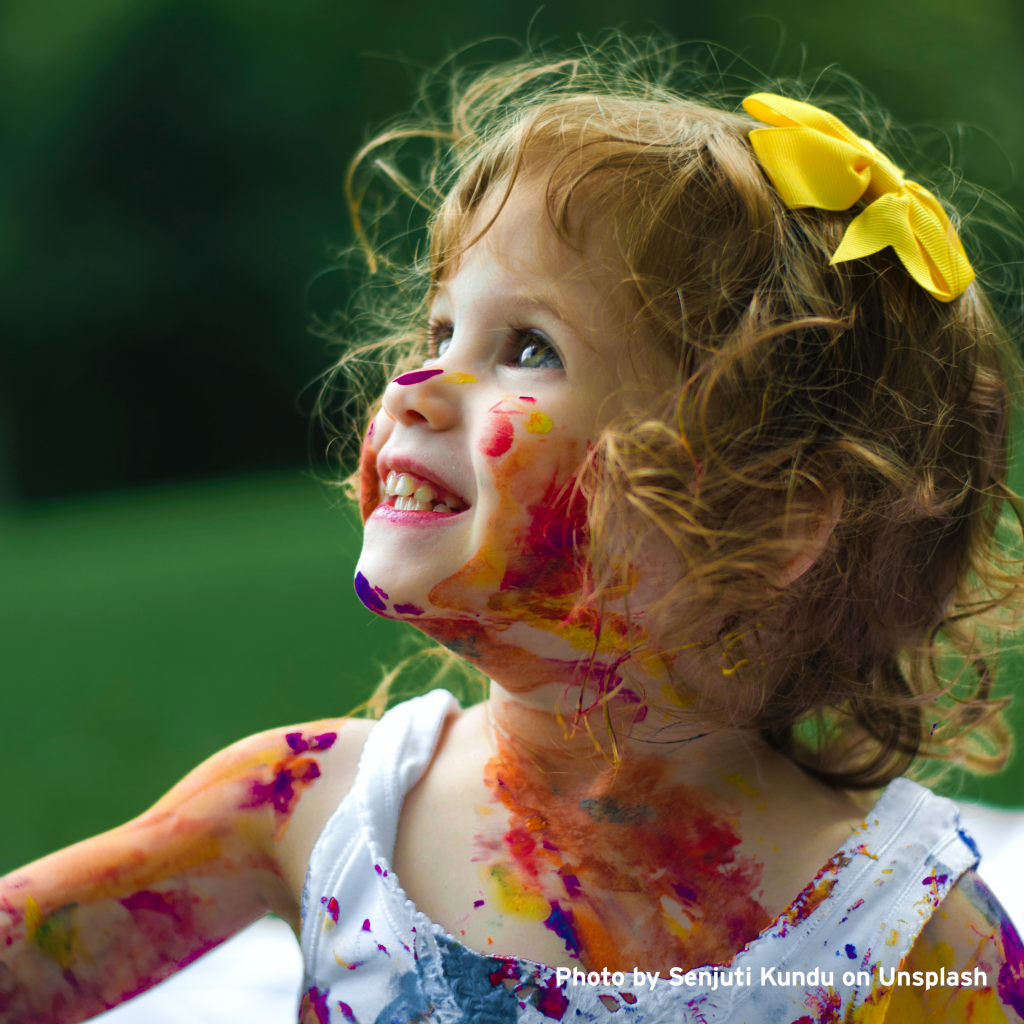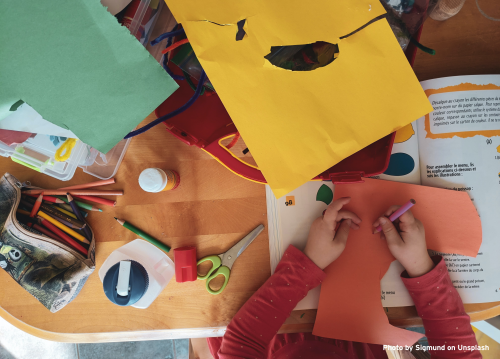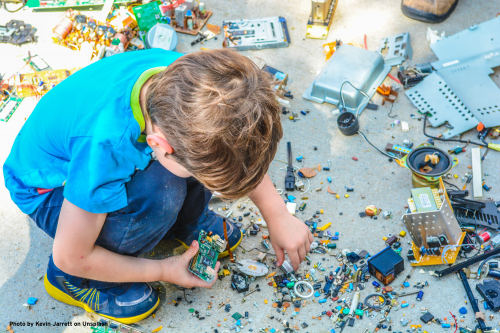Art and Aptitude

Of all subjects offered to children, art is perhaps the most versatile in supporting basic skills that require practice. Often described as a “fun” or “easy” activity, there are many aspects of art that are seriously vital to developing healthy social, intellectual, and physical skills. The enrichment that art provides often goes unnoticed, so we decided to share why creative fun is so valuable.
SOCIAL SKILLS: Art encourages confidence and self-acceptance. As a rule of thumb, an ideal art project will often set few boundaries for little ones. Being able to make decisions and make plans without structure provides a strong sense of independence and bolsters self-esteem. In addition to freedom, children can polish their social skills through conversation and sharing materials in a group setting.
LISTENING/COMPREHENSION: Sequential thinking, listening, and following directions take place when doing a teacher-led activity. While many art projects have less structure, yet there is still an element of direction given to children, which is most likely centered on the explanation of the activity, rules for sharing materials with others, and cleanup of the workspace.

CRITICAL THINKING: Designing a work of art requires planning and reasoning—and sometimes an open mind that encourages a change of direction when one idea doesn’t pan out. The combination of planning and trial and error teaches cause and effect, as well as flexibility. In addition, sometimes what starts out as a mistake can become a success when children maintain a positive attitude and solve the problem—all valuable skills to use throughout life.
PATIENCE: When a craft requires multiple steps to complete, children experience sequential learning and develop an increased attention span. Art is really quite magical, as I’ve seen it transform a restless child into a focused and engaged little artist. Understanding that some projects require more time is also a perfect way to instill patience in a child. Many plans in life require planning and perseverance to meet a challenge—and art encourages both.
LANGUAGE: Discussion about and presentation of artwork accelerates language development. Good teachers and active parents engage children in discussion about their artwork and ask questions about why certain choices were made. In addition, if kids are given the opportunity to present their artwork and talk about it in front of others, it goes a long way toward creating excellent verbal confidence.
RESPONSIBILITY: Clean up and returning craft items and art supplies to their proper place is an opportunity to develop a healthy sense of responsibility. Actively model desired behaviors but insist that your children be involved in accomplishing the clean-up. Another great byproduct of this practice is teaching your child a greater appreciation for the materials you purchase for them to use. Rinse the brushes, seal the paints, sweep up the glitter, and cap the glue—teach your children that taking care of these things makes them last longer.

MATH: Repeat Patterns used in graph paper designs, beading, and weaving help finetune counting, measurement, sorting, and planning skills. Recognizing and choosing the application of shapes in the artwork is also a reminder of basic geometry, principles of symmetry, perspective, and proportion.
MOTOR SKILLS: I can’t stress this enough–drawing, coloring, painting, cutting with scissors, gluing pieces, hand-stitching, and weaving go a long way toward developing strong small motor skills. Art projects that include these activities are a fun way to prepare kids for basic things, like handwriting, device and mouse manipulation, and tying to advanced skills like keyboard use or playing a musical instrument.
SCIENCE: So many principles of science are applied in crafting—like mixing colors, simple chemical reactions, wax resistance, and adhesion. Using elements of nature is also a great way to integrate science—paint with leaves, repeat patterns using potato prints, marble paper with ink, oil, and water, use salt on a watercolor painting to create crystals, use heat to change colors. Using paper mache to create planets in the solar system or natural environments is also a great way to integrate art with science.
SENSORY DEVELOPMENT: Sensory-driven use of hands in fingerpainting and texturizing surfaces is important to development—as is smell, sight, hearing, and taste. An experience with flour, salt, and water playdough involves smell and taste. Have you ever smelled the fragrance of crayons, a permanent marker, oil paints, or earth clay? Have you ever painted to music? Have you ever watched how colors mingle and transform when layered over one another? All these things and more take place when children experiment with a wide variety of art materials.
ENHANCED FAMILY LIFE: Craft activities create bonding time and foster conversational skills. Is there anything more important than communication? Taking part in crafts with your children is healthy for them—and for you. Projects that require following directions with precise steps and downtime in between crafting sessions help to illustrate “process,” cause and effect, and the value of focus. Additionally, if you make a point of displaying art projects, it’s a perfect way to build self-esteem.